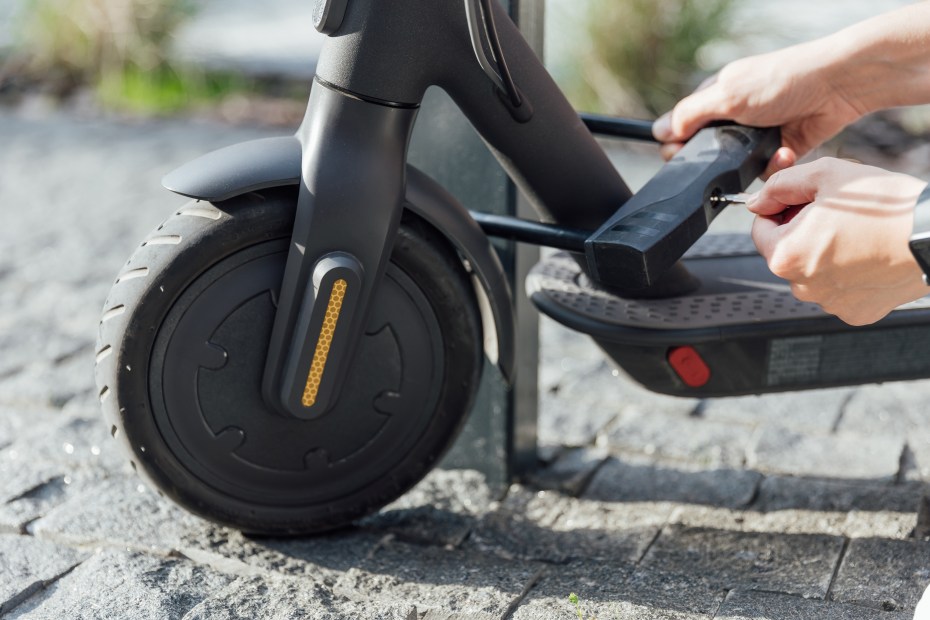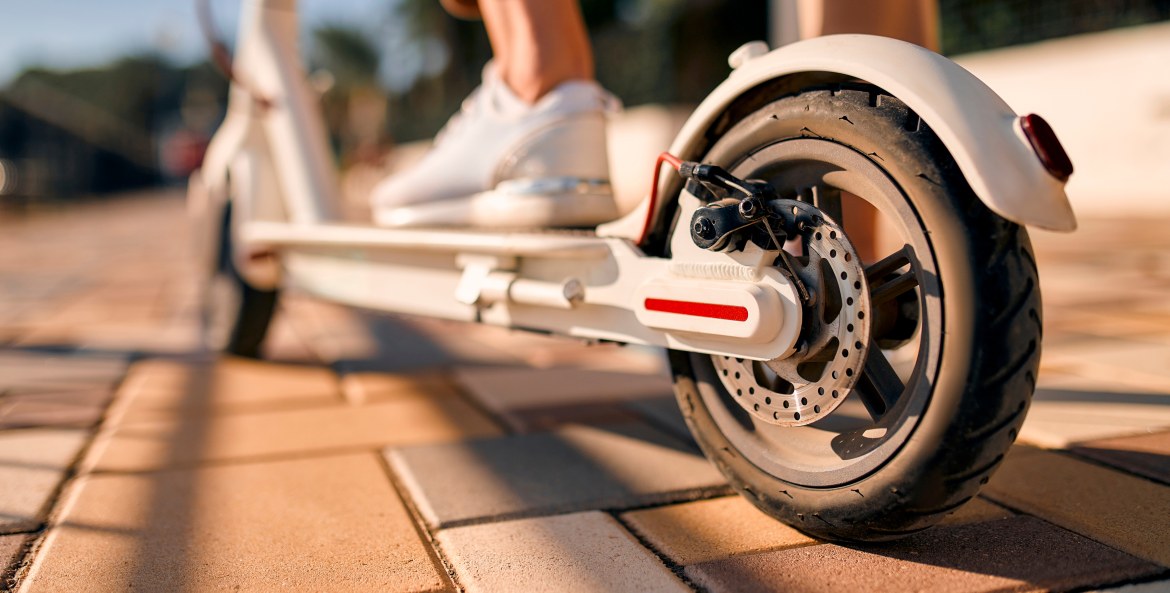In the past few years, electric scooters have taken off as an easy-breezy, fun way to zip around town. More than 250 e-scooter sharing systems have rolled out across the U.S. and, in 2022, people took 58.5 million scooter-sharing rides.
These micromobility machines offer numerous benefits. Electric scooter riders can enjoy zooming past traffic and bypassing parking problems while saving money on gas and reducing pollution and road congestion. Balancing on a scooter’s deck boosts muscle strength in the legs and core, revs up blood circulation, and provides relief from the 6.5 to 8 hours a day the average American spends sitting.
As manufacturers have improved durability and battery technology, the devices are becoming increasingly eco-friendly. With these modernized fleets, e-scooting is much more sustainable than driving a vehicle or even riding a bus, though it’s not as green as walking, bicycling, or taking a tram.
Because scooting seems like child’s play, many people may be nonchalant about safety issues. But in fact, e-scooter riders sustain more injuries per mile than bicyclists, according to a study from the Insurance Institute for Highway Safety (IIHS). Between 2017 and 2022, the U.S. Consumer Product Safety Commission reports that 111 people died in e-scooter incidents.
Still, e-scooters can be a safe and efficient way of getting around, if you take proper precautions.
Don’t let kids ride electric scooters.
It’s easy for people of any age to rent an e-scooter with the touch of an app. However, the American Academy of Pediatrics stresses that children under 16 should not ride an electric scooter, and, in some cities, doing so is illegal.
Inspect the scooter before hopping on.
You may have seen shared e-scooters ditched in a dark alley or lying haphazardly in a puddle on a lawn. These things take a beating. So it’s important to check that the handlebars, tires, and other parts are in good condition, since damaged e-scooters could malfunction and cause you to crash. Report any damage to the sharing service’s app; you could save someone’s life.
Test the brakes.
You don’t want to find out the brakes don’t work when you’re about to careen into a car. Start riding slowly, then make sure the brakes are functioning and that you have a good sense of how long it takes the scooter to stop.

Wear a helmet and protective clothing.
A study from the Graz University of Technology found that wearing a helmet while riding an electric scooter can decrease the risk of head injury by up to 44 percent. Experts also recommend wearing closed-toed shoes, elbow pads and knee pads, plus reflective gear at night.
Know where to ride.
If possible, ride in the bicycle lane, since the risk of injury increases on both sidewalks and on roads with vehicles. If there is no bicycle lane, some cities advise you to ride on the road if the speed limit is 25 mph or lower or on the sidewalk if the speed limit is higher. But laws vary by city and district, and some places prohibit scooting on sidewalks. Know the rules before you ride.
Ride slowly.
Experts differ on the recommended speeds for e-scooters, but the rule of thumb is to ride like a tortoise, not a hare. The Graz University study found that when the collision speed on e-scooters was reduced from 25 to 15 kilometers per hour (roughly 15 to 10 mph) the risk of head injuries to pedestrians can decrease by up to 49 percent.
Pay attention to potential hazards.
Assume drivers and pedestrians can’t see or hear you. Warn them with the bell or horn and ride cautiously around them. Also, keep an eye out for hidden dangers. The IIHS study found that e-scooter riders were twice as likely as bicyclists to suffer injuries due to potholes, pavement cracks, lampposts, and signposts.
Avoid distractions while riding.
Don’t text, talk on your phone, listen to music with earbuds or headphones, or multitask while scooting.
Don’t scoot under the influence.
If you’ve had a few drinks and think taking an e-scooter home is safer than driving, think again. Never scoot if you’ve been drinking alcohol, using drugs, or taking medications that impair function.

Park safely and respectfully.
Park your scooter upright, and make sure it’s not a tripping hazard for pedestrians or a danger to drivers.
If you own an e-scooter, know how to properly charge and store your batteries.
Damaged scooter batteries can erupt in flames or explode. Keep your batteries at room temperature. Stop charging the battery once it’s full, and don’t leave the battery plugged in overnight while you sleep. Do not use your device if the battery shows signs of damage, such as leaking, deformation, changing color, or emitting a strange odor. Charge only one battery at a time to avoid overloading the circuit. For more tips, visit the National Fire Protection Association’s page on e-scooter charging and safety.
